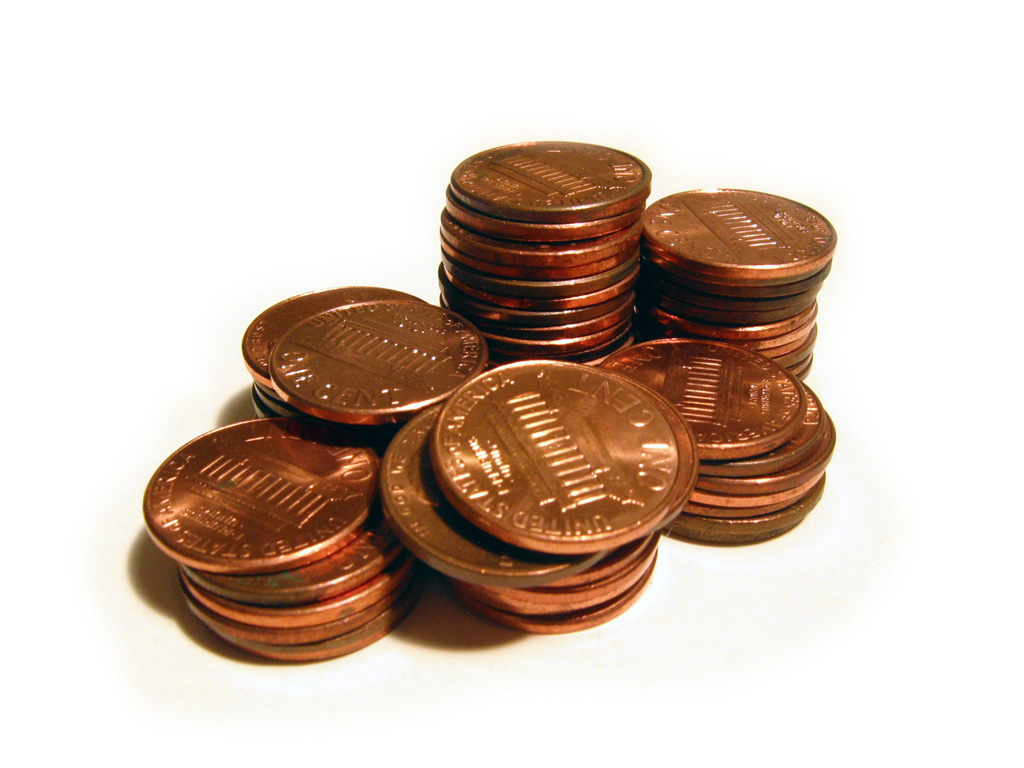Pennies From Everywhere

College tuition is expensive, at least in the United States. The University of California, Los Angeles (UCLA), for example, charges an estimated $31,000 to in-state students who live on campus, and that price shoots up to over $54,000 per year if you happen to hail from outside of California due to a “non-resident supplemental tuition.” The University of Illinois at Urbana-Champaign (U of I) has a similar price tag, with a base tuition of $24,000 for out-of-staters (and just under $11,000 for in-state students) plus an estimated $16,000 for room, board, and other expenses. That comes to about $27,000 for in-state students or $40,000 for non-residents, per year.
So you could see why someone from Illinois would prefer to go to U of I than, say, UCLA. Out of the gate, they’re saving roughly half the cost. But $27,000 a year for four years is still a lot of money. Even with grants and scholarships and student loans available, that’s a significant expense for almost anyone. In 1987, a U of I freshman named Mike Hayes figured out a neat way to cut his costs. He asked a columnist at the Chicago Tribune to help him find donors to back his education — one penny at a time.
That year, Hayes wrote to columnist Bob Greene with his novel idea. If Hayes could get 2.8 million people to each send him one penny, his tuition, room, board, and the like would be paid for in full. (For a current U of I student, that would be one year’s fees. For Hayes, that was for all four years.)
It was an outlandish request, sure, but it perhaps it played on Greene’s sense of ego. (Greene, in 2002, would resign from the Tribune in disgrace, having “an extramarital sexual relationship 14 years earlier with a high school student,” according to Wikipedia. Wikipedia expands on the topic, quoting a CNN personality saying that Greene was “famous for using his position as a columnist… to try to get women into bed.”) On September 6, 1987, Greene wrote a column-slash-call-to-action, hoping to get those 2.8 million pennies for the young Mr. Hayes. They realized that the challenge was, likely, foolish:
Mike Hayes knows-and I know-the real dilemma here.
Right now, every person who is reading this column is thinking, “That`s a pretty funny idea. I think I`ll send the kid a penny.”
But the vast majority of you won’t. You’ll chuckle, and maybe shake your head, and if someone else is in the room you might mention this to him or her. But then you`ll just turn the page and forget about it.
It’s not that the penny means anything to you. It`s just that getting out of your chair, finding an envelope, addressing it, putting a stamp on it and remembering to drop it in a mailbox is a lot of trouble.
Well . . . not a lot of trouble. But more trouble than you`re willing to deal with.
Twice in the article, Greene posted Hayes’ PO Box address. And when Hayes graduated in 1991, Greene did a follow-up piece. The result: Hayes did not end up getting 2.8 million pennies. He ended up getting far fewer than that — but, to make up for it, he received a bunch of nickels and quarters and even some paper currency and checks. People from all fifty states and a few places overseas sent small donations to Hayes. Most of the money — $23,000 of it — came within the first few weeks. And during that short time period, the postmaster of Hayes’ hometown estimates that Hayes received roughly 70,000 pieces of mail, meaning the average donation was in the 35-cent range, plus another 22 cents for postage.
In the end, he collected $29,000 — more than enough to cover his education. As for the leftover $1,000, Hayes decided to pay it forward:
Mike plans to give the extra $1,000 to a deserving college student from one of the families that sent him pennies. “I’m not going to be real scientific about it,” he said. “I’m just going to stick my hand into those 90,000 letters we saved, start calling people whose names are on the envelopes I grab, and ask if there`s a person in their family who needs $1,000 for college. I`m going to trust them-I`m going to count on them to tell me if they don`t really need the college money. If they don`t need it, I`ll move on to the next envelope.”
That’s 100,000 pennies, in case you’re counting.
Bonus fact: At the base of the Grand Canyon live a tribe of Native Americans known as the Havasupai. In order for the United States Postal Service to deliver mail to the Havasupai, the USPS puts mail carriers on mules. Each mule carries approximately 130 pounds of mail and packages down the eight mile trail daily, totalling about 41,000 pounds each week, per the USPS. 2.8 million pennies weighs about 77 tons. It’d take about 26 or so days for the USPS to deliver 2.8 million pennies to a college student living there.
From the Archives: From Abe to Zinc: It costs 1.62 cents to make a penny and get it into circulation.
Related: One pound of old pennies.

Leave a comment